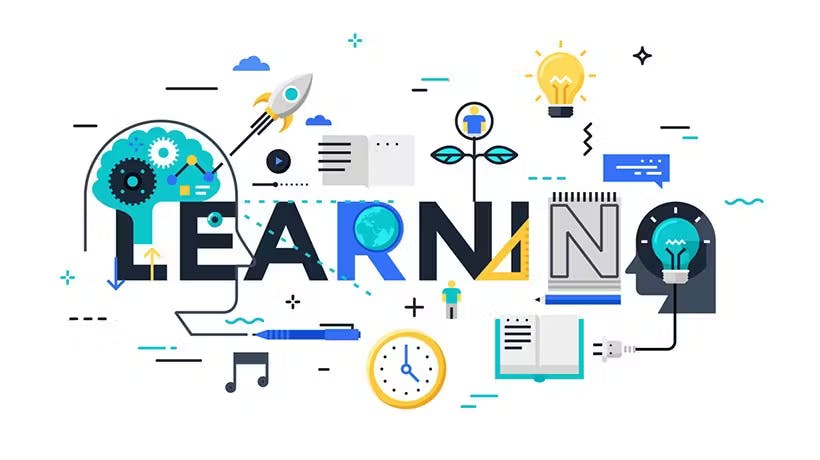

I have heard a lot of people saying in order to develop your world-class expertise in a specific field, you need to spend approximately 10,000 hours. If you are reading this blog and thinking: “Oof, that sounds like a lot of effort”, it does! Then you are probably wondering if there are any other ways that help you learn something up really fast without having to waste at least 3.5 years of your life given that you practice deliberately for 8 hours a day. The answer is no,... and yes.
I guess when it comes to balancing mastery and endeavour, there exists a certain trade-off. And whether it is huge or small really depends on your end goals. If you have firmly in mind what you love and can spend your entire time of existence doing it, there is no other way than devoting a large time sink and huge commitment to become a specialised expert in that subject. But what if you are not too sure about your future paths and just simply want to try out everything before deciding what you should do next? What if all you want is to be just good enough? How to make sure you can reach a level of reasonable goodness while keeping sacrifice to the minimum?
As someone who has a commitment issue and always wants to do more than one thing, I have a brain like a rubbish heap. Transfer pricing, business insolvency, data analytics, digital marketing, UX/UI design, etc. - those are few of many things that pile up in my mind that I would like to give all a go before I reach the point where I tell myself: “Alright, that’s enough for a life of wanderer.” Do I actually try them out? Yes, I have managed to learn financial modelling, R and Matlab for data analysis by myself when I studied Economics at university. And part of my current job is dealing with sales and marketing. Do I have tips on how to learn everything from scratch? Yes and I am willing to share with any of you. Do they involve the said 10,000 hours? Absolutely not, I have a serious commitment issue.
In fact, you need as little as 20 hours and five elements that help you become reasonably good at anything - this is also what Josh Kaufman, the author of The Personal MBA, has researched and developed throughout his learning journey.

Nobody wants to be perceived as absurd but we all know any of humans on Earth completely suck at more than one thing. Majority of people choose to bury their heads in the sand and live in the toxic mindset because they are absolutely terrible at something now, they can never be better in the future. The others own up to the uncomfortable feeling of being stupid but try to improve themselves little by little everyday until they overcome their struggling emotions. You see, the problem is not life being unfair with one born being smarter than others. The problem lies in your attitude towards your weaknesses. More often than not, people are not changing because they are scared of it. And when their fear takes over, they resist any rising urge to be wiser or better. The question is, how can we embrace changes more?
Starting is often the hardest part and you will for sure see yourself going through that period full of frustration at how grossly incompetent you are. Dealing with autonomy is hard because you cannot see whether there is an actual light at the end of the tunnel. But having faith in the journey is part of the journey itself. Believe that it will get better. Tell yourself that: “If not now, then when” when you catch yourself falling deeply in the procrastination trap. Imagine the heavy sword of “knowledge” you will wield to fight the opinions of those who say you cannot do it.
The major barrier to improvement is not intelligence, it is emotion. Own up to your uncomfortable feeling when beginning something new and do it anyway.
For most people, the impetus to learn a new skill is to achieve a specific task. Perhaps you want to learn coding because you are thinking of swapping your career. Or you want to learn how to play a guitar because you want to organise the most romantic dinner for your significant half. So why not imagine yourself actually doing it and making a complete disaster?
When starting to learn how to do financial modelling, I imagined myself as an equity research analyst at one of the bulge bracket investment banks and being asked to develop investment thesis for Hewlett-Packett’s share price. In my fictional scenario, I did not receive any help from my colleagues or managers. The deadline was in two weeks, which meant I would suffer through night shifts with loads of coffee. Clients might not like what I came up with and criticised my poor valuation skills.
So, in order not to disappoint my clients, I need to gather all the information I need about HP - their business model, suppliers and consumers, financial health and position, share price movements in the last 12 months, etc. I need to work on the financial statement logics and see how they fit in together. I also need to come up with revenue forecasting in the next 5 years and in order to do so, I need to conduct both “bottom-up” and “top-down” analyses. That means I need to read up industry and macroeconomic research. The other task that needs completing is generating enterprise value and working out the predicted share price. The final step is to analyse investment risks and how they may affect my recommendation.
You see, when you assign yourself a project that may go so wrong that you cannot bear the consequences you will know how to break it down into smaller bundles. The deconstruction allows you to focus on what you should do to achieve the short-term and long-term goals. Take what you need for a day and leave anything else for the other time. Your learning curve is set up in a way that can soon derive gains and make you feel less burnt out.
If anything I take away from my self-learning journey, it should be setting up my own work station. A quiet place with a great source of natural lighting, a small tower of books, pens, and laptops can help generate a productive working session. I tend to keep my desk tidy as much as possible and avoid bringing food in so that I do not feel too casual and laid back when sitting there. Once starting to work, I open the “Forest” app on my phone to track my productivity progress and make sure I do not get any distraction.
It is also important to have all the tools you need to complete a self-assigned project on your hands. If you are learning to play the guitar, have the guitar tuned in, open the musical sheets or online tutorials. Leave a bottle of water close to your reach so that you do not have to rush to get one later. They are all small obstacles that can give you excuses for delaying your actual practice. Get them sorted in advance and set a right mood for you to dive right into your own project.
Set your goal of when do you want to finish the 20-hour time duration and spread it out evenly throughout the days. Back to my financial modelling example, I wanted to have my excel valuation sheet fully filled by the end of week three. That meant I would have 21 days to finish my own project and I should do it for approximately an hour everyday. Then, I divided my set daily time into morning and night sessions, each last for 30 minutes. The morning session can be anytime between 8:00am-10:00am and the night one be 8:00pm-10:00pm. I pick them because I feel most energised after taking on a full 8-hour sleep with an hour workout and I always look forward to having a good treat after finishing my work.
Spreading time throughout the day helps with your burnout, especially at the beginning of your self-learning journey which can get really frustrating. Treating yourself well with some immediate rewards can also add up to your sense of achievement psychologically. They do not have to be big and pricey like having a brand new PS set (although it can be yours after you finish the whole project). Something smaller and less costly but you have always wanted can have the same effect.
20 hours is very doable. The key here is to stay persistent with your practice and do not force yourself to work over the fixed daily amount of time. In Asia, we say: “Haste makes waste” - use your time wisely!
It is important that you understand your end goal is to acquire information so that you can be good enough at the new skills, not to craft your mastery. Or else, you should switch to the 10,000 hours learning rule. Therefore, grasp the new knowledge to the point where you can spot your own mistakes and feel the urge to make needed adjustments rising inside yourself.
By the time I started carrying out “bottom-up” analysis to complete my revenue forecast, I already had in mind the revenue trend based on the executive presentations and industry research. What I wanted to do is to justify it with other financial elements and compare with the “top-down” analysis. When double-checking my calculations, I noticed that some did not really make sense. So, I went to the Internet, watched the tutorials or referred to the books that I could find in the virtual library. Once I found what I needed, I came back to correct my sheets then moved on.
You see, recognising your mistake is essential and so is seeking feedback. Your feedback can come from yourself, mentors, or friends who have certain knowledge about the field and are willing to help you out. But feedback is only good if you proactively fix your own problems. Make adjustments as needed, leave it for today, come back tomorrow and revise what you have done. Then eventually, you will see yourself reach your desired level of proficiency.
When it comes to learning, there is no such thing as “one size fits all”. Know your needs, your working style and make the most of the 20 hours.
Email us directly at hello@sigmaschool.co!
Want to learn to find out more about what we do?
Learn more here: https://sigmaschool.co
Let’s get social! Find us on:
Facebook: https://www.facebook.com/joinsigma/
Instagram: https://www.instagram.com/joinsigma/
Linkedin: https://linkedin.com/company/79085028/